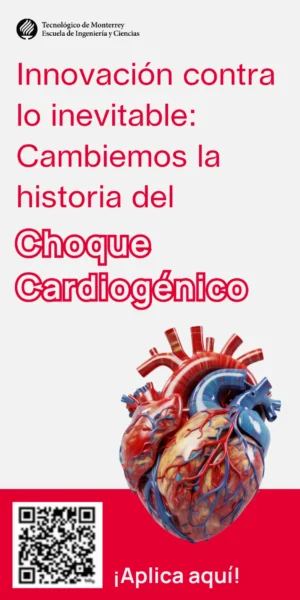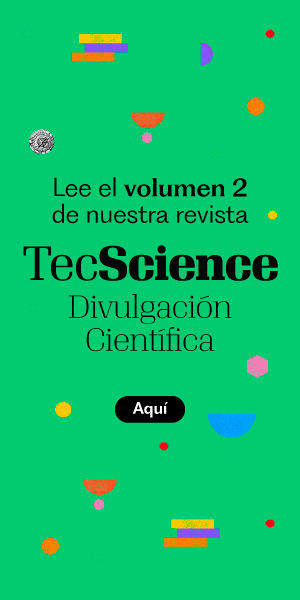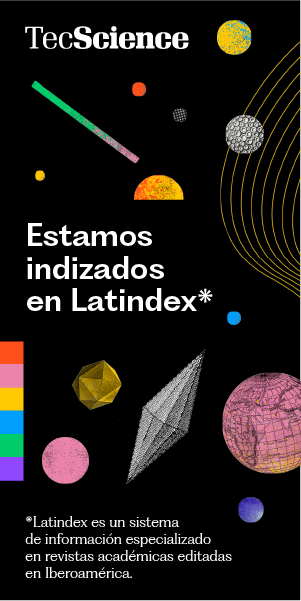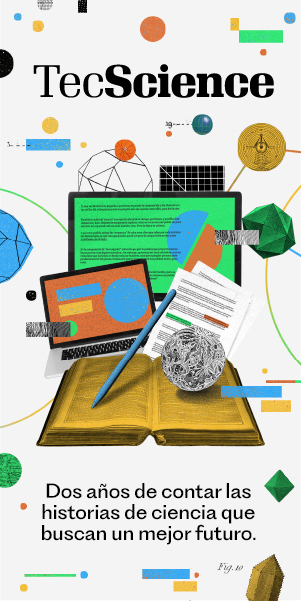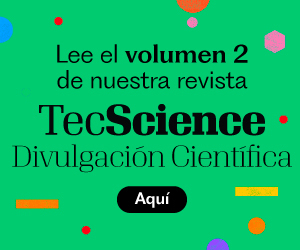“I always knew I wanted to be a scientist!” says Mexican biologist Antonio Lazcano with a smile. An international figure in evolutionary biology and the science of life’s origins, Lazcano shares how his deep curiosity about how the world works led him to embrace science from a very young age.
The researcher spoke with TecScience before launching his book El retablo de las maravillas (The Marvelous Puppet Show) at the 2025 Monterrey International Book Fair. The book brings together eight essays he published over the course of his career, aimed at making biology accessible and honoring key figures in the scientific community.
From the Iliad to the Laboratory
He attended elementary school—and part of middle school—in the United States, in a school environment that actively promoted science. Classrooms were equipped with microscopes, telescopes, books, and weekly documentary screenings, all set against the backdrop of the space race frenzy and the U.S. government’s fear of falling behind the Soviets after the launch of their first satellite, Sputnik.
His family also played a key role in awakening his interest in culture and science. When he turned 11, his mother gave him the first complete edition of The Iliad and The Odyssey; his father gave him a book explaining Alexander Oparin’s theories on the origin of life; and an uncle gave him Microbe Hunters by Paul de Kruif, in which one of the characters, Lazzaro Spallanzani, had conducted experiments on spontaneous generation.
After returning to Mexico, he lived with his grandmother in Mexico City, where he was surrounded by books and regularly attended opera concerts.
But it was during high school at the National Autonomous University of Mexico (UNAM) that he discovered—and fully embraced—his true vocation, one that he continues to pursue today, at 75 years old, as a scholar and science advocate: studying the origin of life.
“To study and understand how life emerges, you have to reconstruct the astronomical, planetary, geological, and chemical conditions,” Lazcano explains. “It also raises a series of philosophical questions: What is life, and how can we define it? At what point does the transition from ‘non-living’ to living occur? For me, it was natural to feel a pull—both scientific and intellectual.”
Today, Lazcano is one of the most respected voices in this field. He is the Mexican researcher with the most publications in Science and Nature; he served on NASA’s scientific advisory committee overseeing the creation of the Astrobiology Institute; and he’s the first Latin American to serve as president of the International Society for the Study of the Origins of Life.
He is a member of El Colegio Nacional and the Latin American Academy of Sciences, and he is also a professor at UNAM, where he founded and currently directs the Origins of Life Laboratory.
It’s in this lab where Lazcano conducts experiments aimed at testing theories about how life may have emerged, drawing on advances in technology and integrating fields such as astronomy, biology, geophysics, microbial evolution, and cosmochemistry.

How the Origin of Life Is Studied
Using chemical analysis methods, researchers can simulate in the lab the conditions of early Earth—around 4.5 billion years ago—and recreate the atmospheres of that era, before life existed, to better understand the composition of the bodies from which meteorites originate.
“I’ve taken part in experiments with great colleagues in the United States, including Joan Oró, from whom I learned how to work with meteorites and simulate the conditions of early Earth, and later with Stanley Miller, with whom I worked for many years trying to replicate those conditions in the lab.”
Miller was a pioneer in this kind of research. In one of his most famous experiments, he placed gases—such as methane and ammonia, which scientists like Oparin and Urey believed were present on primitive Earth—into a flask and triggered chemical reactions by applying energy sources. Lazcano took it a step further by studying the Murchison meteorite, which fell in Australia in 1969. After analyzing it, he compared its composition to his lab results to evaluate whether his experiments accurately mirrored the chemistry of the early solar system.
Meteorites come from outer space—some from the Moon, others from Mars or asteroids. Some even originate from the disintegration of comet nuclei, which are essentially balls of ice. This last type serves as the model for experiments in his lab: carbon dioxide ice combined with stony and metallic meteorites. As these icy bodies approach the Sun, they shift from a solid to a gaseous state. Over time, what remains is a material known as “refractory”—small rocky fragments that can be analyzed and which, according to Lazcano, are as old as the solar system itself.
“The central idea of Oparin’s theory is that the origin of life wasn’t a sudden event, but rather the result of a process,” the scientist explains. “The organic compounds or metallic elements we find in experiments are part of that process. You could say they’re a necessary condition, but not sufficient on their own for life to appear.”
Another field that has greatly contributed to understanding early life evolution, he adds, is bioinformatics—the comparison of protein and nucleic acid sequences, which is something his lab actively engages in.
Lazcano’s team has also used bioinformatics tools to study the early evolution of organisms. In the lab, they analyze amino acid and nucleotide sequences, as well as the spatial structures they form. During the Covid-19 pandemic, one of his former students, Rodrigo Jácome, was working on those structures when he noticed that some viral proteins contain very ancient components. That observation gave rise to a new line of research.
“Today, everyone talks about DNA, but before that, RNA was the genetic material,” he explains. “Modern viruses like coronavirus, dengue, chikungunya, and HIV have RNA as their genetic material. So we use these viruses as models—not as direct examples of life from primitive Earth, but as models of very ancient genomes. Understanding what viruses are made of is essential to any strategy for stopping them.”
For Lazcano, one of the most fascinating aspects of studying the origin of life is how it brings together multiple disciplines. It’s a field where talent from biology, engineering, computer science, astronomy, and many other areas can converge and grow.
He believes that progress in this area will continue through that very convergence—by diving deep into the specifics of each field and learning how to integrate them. He adds that young people are Mexico’s most valuable scientific and developmental resource; all that’s missing is stronger support through cross-cutting science policies and the recognition of science as a vital component for building a modern, democratic, and balanced society.

The Marvelous Puppet Show
Speaking about his book, El retablo de las maravillas (The Marvelous Puppet Show), Lazcano says he decided to publish it after rereading a series of essays he had written over the course of his career and realizing how deeply he admired figures who helped shape the history of science. He mentions names like Erasmus Darwin, the grandfather of Charles Darwin; Rachel Carson, the researcher whose book Silent Spring exposed the environmental dangers of pesticides and sparked movements that led to major shifts in U.S. environmental policy; and Lynn Margulis, the scientist who proposed the theory of endosymbiosis and with whom he shared a close friendship.
The book’s title was inspired by one of Miguel de Cervantes’ short plays, or entremeses, intended to evoke the sense of wonder and curiosity people feel when they encounter the natural world—like when they visit a science or natural history museum for the first time.
“When we witness a phenomenon like a meteorite falling from the sky or the splendor of a rainforest, we become that child again—marveling at the world for the first time,” he explains. “That’s where the title comes from. The book’s purpose is to show that science has a history, one shaped by men and women who had predecessors—and who, we hope, will have successors. And that science can be both incredibly fun and profoundly meaningful. For those of us drawn to science, there’s a joy that’s not just intellectual—it’s also social and political. There’s a magnificent aesthetic joy to be found in science.”
Were you interested in this story? Do you want to publish it? Contact our content editor to learn more about marianaleonm@tec.mx







